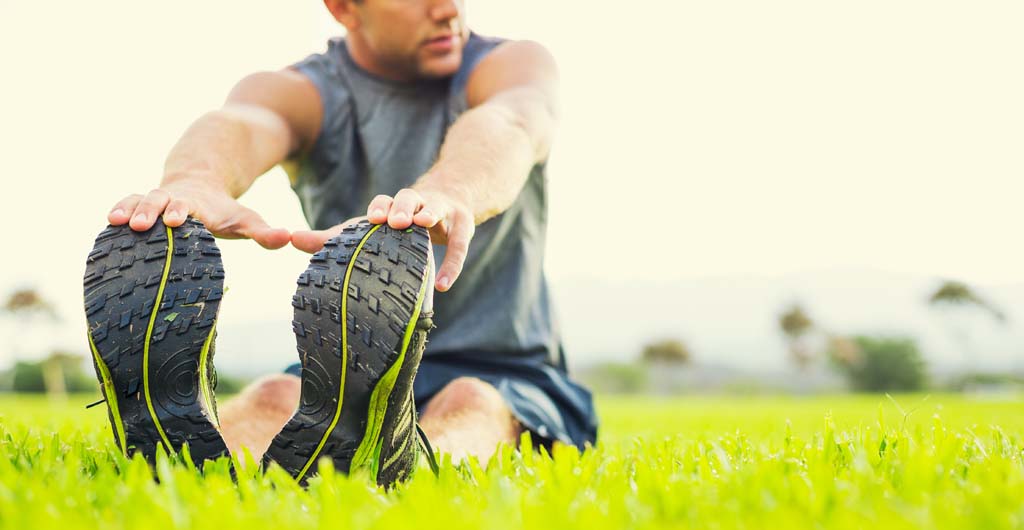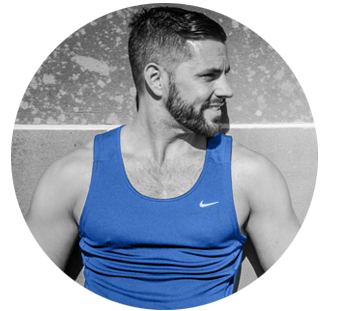Posture is the term used to describe the alignment of your joints. In simple terms, posture can be good or bad but as posture refers to pretty much every joint in your body, it’s actually a little more complicated than this. Bad posture can interfere with digestion, breathing, cause stress, headaches, and cause other body parts to become problem areas as well.
Poor posture is usually the result of one or more of the following…
Muscle tightness – a tight muscle will pull a joint out of good posture. For example, tight chest muscles can pull your shoulders forward.
Muscle weakness – weak muscles are less able to hold you in good posture than strong muscles, the result being that your spine or other bones and joints become misaligned. For example, weak upper back muscles (specifically the lower traps mid traps, and rhomboids) can be the cause of a slouch especially when combined with overactive upper traps, overly tight pecs and lats which end up pulling your upper spine out of proper alignment.
Bad habits – your body is a quick learner and if you frequently adopt poor posture, it will soon become habitual. Sitting at your desk and craning your neck forward so your eyes are closer to the screen will soon become the position you adopt whenever you are sitting or standing. This causes a pronounced forward head posture which places a lot of stress on your neck.
Lack of postural awareness – if you don’t know what good posture looks and feels like, it’s unlikely you’ll find it by accident. You parents may well have told you to stand up straight or not to slouch but unless you were actually taught what these things are, you may not have understood what was being asked of you.

Previous injury – if you are in pain, your body will make accommodations to find you the most comfortable position possible. Quite often, you will “lean away from pain”. It’s very common for these newly comfortable positions to become habitual even when the pain has gone. A habitual limp is a good example of this phenomenon as is favouring one side of your body.
- Being pregnant or significantly overweight – a big belly, thick thighs or a heavy bust can significantly alter your posture. In the case of pregnancy, postural abnormalities normally only manifest in the second and third trimesters and soon disappear in the postnatal period. Being overweight for a long time can cause more lasting damage to your posture.
Causes and fixes for common postural problems
If your postural problem also causes you pain, consult with a medical professional before trying to fix it for yourself.
- Forward head carry
Ideally, your ears should be directly over your shoulders but spending long periods of time sat in front of a computer or driving a car can result in a forward head carry. This is commonly the result of poor sitting habits, tight deep neck flexors, weak neck extensors and bad eyesight. Why bad eyesight? Because if you can’t see your screen clearly, you will crane your head forward to be able to view it more clearly!
To fix this problem, get your eyes fixed, remember to lengthen your neck as though your head is being lifted by a balloon and perform the following two exercises…
Chin tucks – lie on your back with your head resting on the floor. Lengthen your neck and tuck your chin in toward your chest. Hold this position for ten to fifteen seconds and then relax. Repeat three to five times.
Head raises – sit down, place your hands on your knees and lean forward. Lower your head toward the floor and then raise it again; look up toward the ceiling. Lower your head and repeat. Continue until you feel a mild discomfort in the back of your neck. Rest a moment and repeat.
Do these exercises several times a day to a) strength and b) strengthen the relevant muscles.
- Rounded shoulders
Rounded shoulders are often seen with medially or inwardly rotated upper arms. If you stand in front of the mirror and can see the backs of your hands in your reflection, you probably have medially rotated upper arms. If you look at yourself from the side and can see your upper back, your shoulders are rounded. Not only are these two postural abnormalities aesthetically unpleasing, they can also have a negative effect on your shoulder health and therefore function.
To fix your shoulders, perform these exercises:
Broomstick shoulder stretch – hold a broomstick behind your lower back and grasp the ends. Push your elbows forward to rotate your arms outward. Shrug your shoulders down and back and hold this position for 60-seconds or more.
External shoulder rotations – lie on your side with a dumbbell in your uppermost hand. Bend your arm to 90 degrees, tuck your elbow into your side and lower your forearm across your abdomen. Raise the dumbbell up by rotating your shoulder outward; your elbow should remain tucked into your side at all times. Lower the weight back down and repeat. Do the same number of reps for each arm.
Bruegger’s postural release – sit or stand with your arms by your sides. Lift your chest and lengthen your neck. Turn your palms to face forward, pull your shoulders down and back and lift your chest. Maintain this position of perfect posture to 60 seconds and then relax. Repeat this exercise to break up long periods of sitting.
Prone Cobra – lie on your front with your legs straight and your hands palms down on the floor. Tuck your chin in so your forehead and nose are resting lightly on the floor. Contract your butt and lower back and lift your chest and shoulders off the floor while pulling your shoulders down and together. Either perform for several slow and controlled reps or just lift and hold. Make sure you breathe rhythmically and don’t hold your breath, Rotate your hands outward to simultaneously reverse internally rotate shoulders.

- Hunched generic xanax bars green upper back
A hunched or rounded upper back can become a serious postural problem if left untreated and may even become a fixed abnormality called a Dowager’s hump. Slouches are usually the result of overly tight chest muscles, weak upper back muscles and poor sitting habits. Address this problem by performing the following exercises several times a day…
Doorway chest stretch – stand in an open doorway and raise your arms so your elbows are bent to 90-degrees and your forearms are flat on the doorframe with your elbows level with your shoulders. Push your chest forward and through the doorway to stretch your chest. Hold this position for 60-seconds and then relax.
Wall angels – stand with your back against a flat wall with your feet around 12-inches away from the wall. Bend your elbows to 90-degrees and place your arms and backs of your hands flat against the wall, elbows at shoulder-height. Slide your arms up and down the wall while keeping your shoulders back and your arms and hands pressed against the wall. Perform six to ten repetitions and then rest. This exercise works and targets the lower traps; muscle that act like straps to pull your shoulders back and down. A hunched back is often the result when these muscles become weak and/or elongated.
If poor mobility makes a standing wall angel too difficult, lie on your back with your legs bent and perform the same movement on the floor. This is an excellent modification for people with very tight chests and shoulders.
Upper back foam rolling – lie on your back with your legs bent and feet flat on the floor. Place a foam roller under your upper back. Roll up and down the roller from the base of your neck to the middle of your back. You may hear a few cracks and clicks initially but this is nothing to worry about; it’s just your spine going back into proper alignment. After ten or so rolls, just lie back over your foam roller and let gravity gently lengthen your upper back. If you have very bad posture start with a rolled up towel and then progress to a half roller and then a full roller. Older ladies please avoid this exercise as your rib cage may not be strong enough to do this exercise safely or comfortably.
- Anterior pelvic tilt
An anterior pelvic tilt means your lower back is excessively arched, your pelvis tips forward at the top and to the rear at the bottom and your butt sticks out. This places a lot of stress on the ligaments and disks of your lumbar spine. An anterior pelvic tilt is common in people that are sedentary, spend a lot of time sitting down or who have weak abdominal muscles. To fix this problem, perform the following exercises…
Hip flexor stretch – kneel down and then take a step forward so you are in a split stance. Place your hands on your front knee and then let your hips drift forward as you extend your rear hip. Hold this position for 30 to 60-seconds and then change sides. Make this stretch deeper by moving your rear leg further back. Try to keep your front shin vertical.
Glute bridges – lie on your back with your legs bent and feet flat on the floor. Push down and lift your hips up so your knees, hips and shoulders form a straight line. Lower your butt back to the floor and repeat. Make this exercised more demanding by holding a weight across your hips.
Planks – lie on your front and rest on your elbows and forearms. Lift your hips up off the floor so your body is straight and there is a slight but not excessive curve in your lower back. Hold this position for 30 to 60-seconds and then relax. Do not hold your breath! Rest on your knees if a full plank is too demanding.
- Elevated shoulders
Stress can make your shoulders creep up and hunch. If this happens frequently enough, you can end up with shoulders that are elevated all the time – even when you aren’t stressed. To fix this problem you should learn to manage your stresses better and also perform these exercises…
Upper trapezius stretch – place your left hand lightly on the top of your head and reach you’re your right leg toward the floor with your right hand. Gently pull your head over to the side while continuing to reach towards the floor with your opposite arm. Hold this stretched position for 30 to 60-seconds and then change sides.
Reverse shrugs – to strengthen your lower trapezius muscles, sit on an exercise bench with your hands next to your hips and your fingers pointing forward. With your arms straight, push your butt forward and off the bench. Shrug your shoulders downs to lift yourself up slightly. Raise your shoulders to lower yourself back down. Continue shrugging yourself up and down for eight to twelve repetitions.
Get a massage – regular massages can help keep the tension out of your upper trapezius muscles and prevent your shoulders from shrugging upward. 30-minutes once or twice a month will complement the stretching and strengthening exercises you are doing.
Poor posture needn’t be a fact of life – you CAN fix your posture! It’s taken years for you to develop bad posture and it will take a concerted effort to fix it but it will be worthwhile; you’ll feel better, look younger and have less pain if you do.
Share this:
Click to share on Twitter (Opens in new window)
Click to share on Facebook (Opens in new window)
Click to share on Google+ (Opens in new window)

AUTHOR
Hi, my name is Dinny Morris. I’m a personal trainer and in sunny Sydney, Australia.
I work with men and women at all levels of their physical development, from overweight couch potatoes who want to get in shape, to professional athletes and natural bodybuilders who want to beef up strength and body mass.

Hi, my name is Dinny Morris. I’m a personal trainer and in sunny Sydney, Australia.
I work with men and women at all levels of their physical development, from overweight couch potatoes who want to get in shape, to professional athletes and natural bodybuilders who want to beef up strength and body mass.

